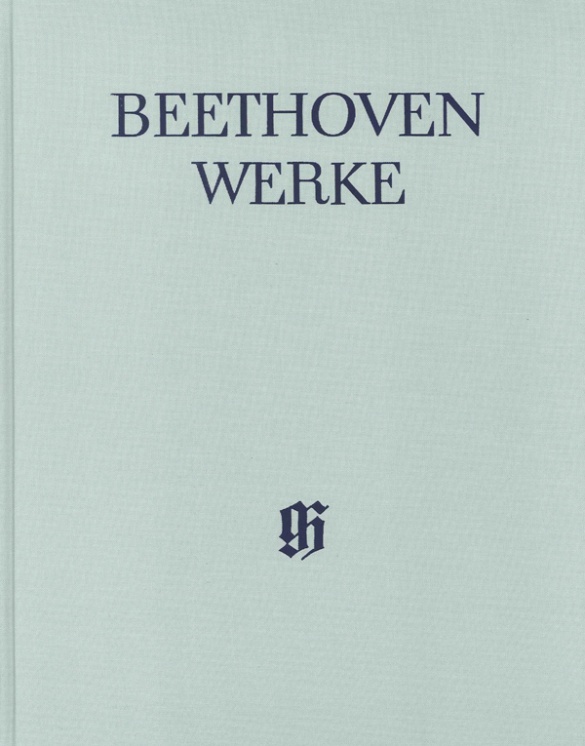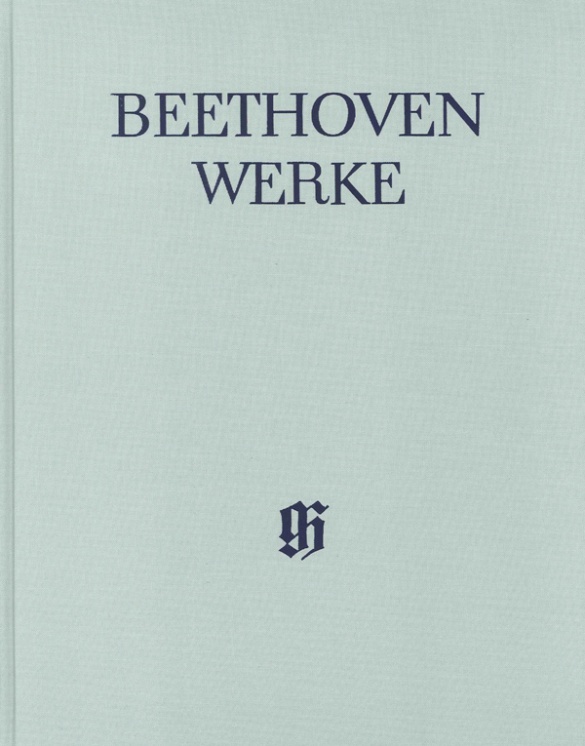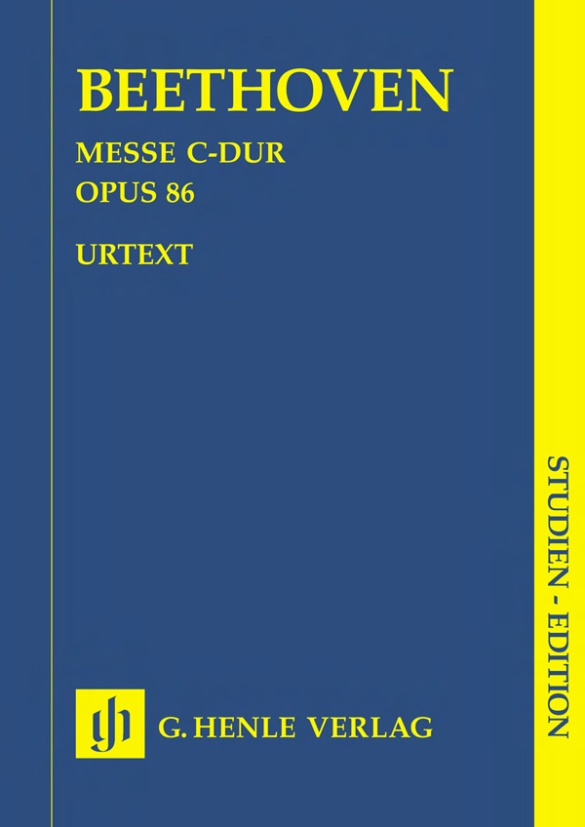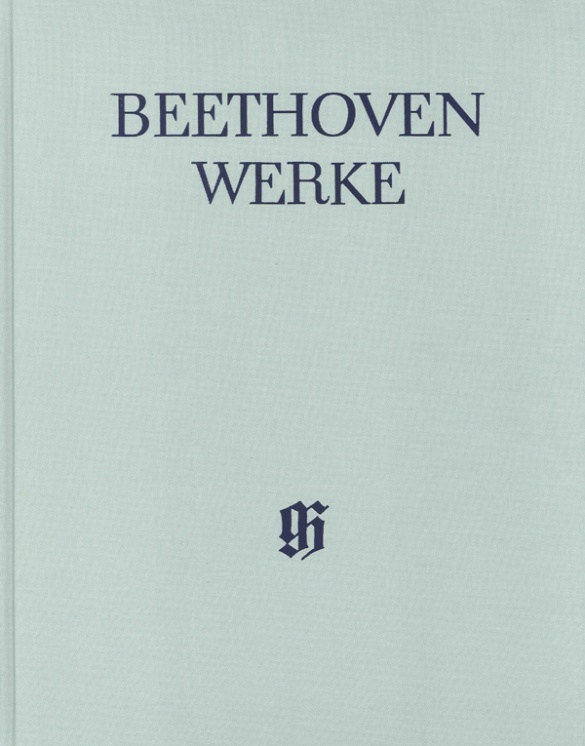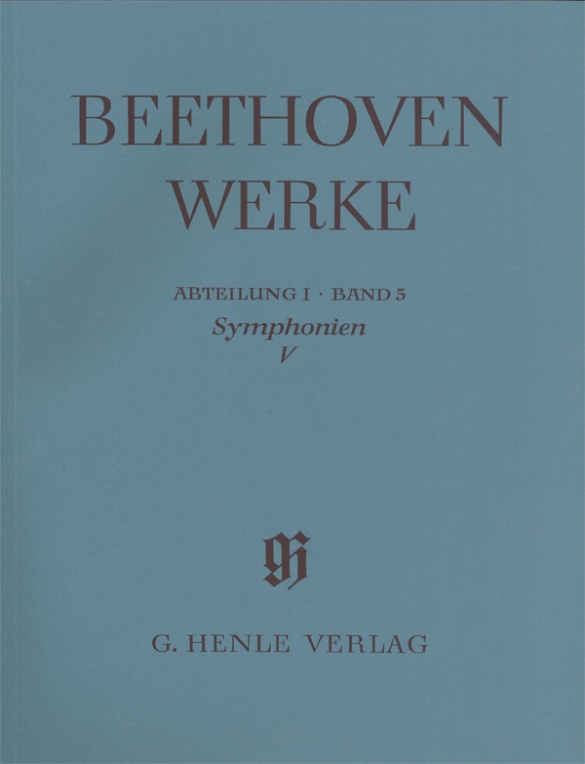

Ludwig van Beethoven
Sect. 1, Vol. 5 | Symphonies V
Content/Details
About the Composer
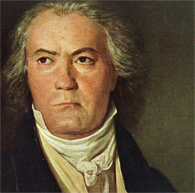
Ludwig van Beethoven
No composer has had as profound and sustained an influence on immediately following generations to the present day as Beethoven. His instrumental music, especially his symphonies, served as touchstones for symphonic composition throughout the nineteenth century. The extraordinarily high standard of his music and his relative independence as a freelance composer have led to his being characterized as the greatest composer of all time.
| 1770 | Baptized in Bonn on December 17, thus probably born on December 16, the son of Johann van Beethoven, a tenor in the court chapel of the prince-elector. First musical instruction from his father. |
| 1778 | First public performance. |
| around 1780 | Musical training with the deputy court organist Christian Gottlob Neefe, who in 1783 presented him in Cramer’s “Magazin der Musik” as a second Mozart. |
| 1782 | Acquaintance with the Breuning family, where his literary interest is aroused. First publication: Piano Variations in C minor on a March by Dressler, WoO 63. |
| 1783 | Harpsichordist in the court chapel; 1784 assistant to the court organist. |
| 1787 | Journey to Vienna. Here he very likely meets Mozart, who probably gives him some lessons. After a short while he must return home to his mother, who is ill with tuberculosis. |
| 1792 | He travels a second time to Vienna, where he will remain until the end of his life. Count von Waldstein sends him on his way with the famous words: “With steady diligence you will receive Mozart’s spirit from Haydn's hands.” In Vienna he studies with Haydn, Albrechtsberger, Schuppanzigh, and Salieri. As a pupil of Joseph Haydn, he achieves extraordinary recognition among the Viennese nobility and receives financial support. Great demand for his compositions from publishing houses: chamber music and piano sonatas from the Bonn and early Viennese years are issued. His first works printed in Vienna (among them the piano sonatas, Op. 2) already bear the hallmark of his compositional style: a forward-advancing, spirited, process-related character. |
| 1796 | Concert tours to Prague, Berlin, Leipzig, and Dresden, which cement his fame. |
| 1798 | Piano Sonata in C Minor, “Pathétique,” Op. 13. |
| 1798–1800 | String quartets, Op. 18. |
| 1799/1800 | Symphony No. 1 in C major, Op. 21 |
| 1795/1800 | Piano Concerto No. 1 in C major, Op. 15 |
| 1800–01 | Piano sonatas, Op. 27, “quasi una fantasia,” including the Moonlight Sonata, Op. 27 No. 2. |
| 1801 | Composition of the Symphony No. 2 in D major, Op. 36 (until 1802). Publication of the Piano Concerto No. 2 in B-flat major, Op. 19. |
| 1801/02 | Crisis brought on by incipient hearing loss, documented in the “Heiligenstadt Testament.” Thereafter he begins, by his own admission, a “New Path” in his compositions, reflected particularly in the piano sonatas, Op. 31 (including the Tempest Sonata); the piano variations, Op. 34 and 35; and the Symphony No. 3 in E-flat major, “Eroica,” Op. 55: they are characterized by enhanced structural development as well as by the use of Baroque techniques and models from other genres. |
| 1803–10/12 | Frenzy of creativity; these years are dubbed Beethoven’s “heroic period”. Written during this phase are Symphonies Nos. 3 through 8 (Opp. 55, 60, 67, 68, 92, 93); Piano Concerti Nos. 3 through 5 (Opp. 37, 58, 73); the Violin Concerto in D major, Op. 61; the Triple Concerto, Op. 56; string quartets (the Razumovsky quartets, Op. 59; the Harp Quartet in E-flat major, Op. 74; the String Quartet in F minor, “serioso,” Op. 95); piano trios (among them the “Ghost” Trio, Op. 70); piano sonatas (including the Waldstein Sonata in C major, Op. 53; the Appassionata in F minor, Op. 57; and “Les Adieux” in E-flat major, Op. 81a); songs (including “An die Hoffnung,” Op. 32); the Mass in C major (Op. 86); and the opera “Fidelio” (Op. 72, first version 1804/5). |
| 1808/09 | Beethoven rejects an offer to become the First Kapellmeister at the court in Kassel because his patrons, Archduke Rudolph, Prince Kinsky, and Prince Lobkowitz, provide him with a comparable yearly salary. |
| 1811/12 | Travels to the spa at Teplitz, where he meets Goethe. In 1812, the letter to the “immortal beloved,” whose identity (Antonie Brentano or Josephine Deym) is still uncertain. |
| 1814 | Piano Sonata in E minor, Op. 90; third version of the opera “Fidelio.” Extraordinarily successful concert with Symphonies Nos. 7 and 8. Still, financial crisis brought about by currency devaluation and the absence of yearly stipends from Kinsky and Lobkowitz. |
| 1815 | Death of his brother Caspar Carl and the beginning of the years-long battle for the guardianship of his nephew Karl. |
| 1816 | Song cycle “An die ferne Geliebte,” Op. 98; Piano Sonata in A major, Op. 101. |
| 1817–18 | Hammerklavier Sonata in B-flat major, Op. 106. |
| 1818 | Beethoven begins keeping conversation books due to increasing hearing loss. |
| 1819–23 | Missa solemnis, Op. 123. |
| 1819/23 | Diabelli Variations, Op. 120. |
| 1820 | Piano Sonata in E major, Op. 109, marks the beginning of his glorious late period, which is characterized by exceeding the boundaries of forms, by extreme pitch registers, advanced harmonies, and an increased penchant for contrapuntal forms such as fugue; standing in opposition to the propensity for esotericism in his chamber music is the monumentality of Symphony No. 9. |
| 1821/22 | Piano Sonatas in A-flat major, Op. 110 (with fugue in the final movement), and C minor, Op. 111 (reduction to two movements). |
| 1822–26 | String quartets, Opp. 127, 130, 131, 132, 135, as well as the Grosse Fuge, Op. 133, which originally formed the final movement of Op. 130. |
| 1823/24 | Completion of the Symphony No. 9 in D minor, Op. 125, which for the first time in the history of the genre includes voice parts (Schiller’s “Ode to Joy”). It will become the most famous and most frequently played symphony of all time. |
| 1827 | Death in Vienna on March 26. |
Product Safety Informations (GPSR)

G. Henle Verlag
Here you can find the information about the manufacturer of the product.G. Henle Verlag e.K.
Forstenrieder Allee 122
81476 München
Germany
info@henle.de
www.henle.com
Myth and legend swirl around Beethoven and his Ninth Symphony. In a new critical edition of the score, the Beethoven Archive in Bonn lets the facts speak for themselves – and has discovered some new sounds.
Khmer Times, 2020Die vorliegende, im Rahmen der Beethoven-Gesamtausgabe maßgeblich von Beate Kraus betreute Edition der 9. Symphonie Beethovens mit beigebundenem ausführlichem Kritischen Bericht zählt zweifellos zu den wichtigsten und gewiss auch bleibenden Publikationen des Beethoven-Jahres 2020. Sie legt nicht nur den textkritisch erarbeiteten, schlechterdings vorzüglich gedruckten Notentext vor, sondern widmet sich besonders auch, wie die Herausgeberin in ihrem knapp einführenden Vorwort herausstellt, der Entstehungsgeschichte, dem Werktitel, der Frage der Kontrafagott-Stimme, dem Schiller-Text und der Textunterlegung im Finale (Worttrennung nach gedehnten Vokalen, zum Beispiel „A - lle“, „Ste - rnen“, „sa - nfter“) und den immer wieder diskutierten Metronom-Angaben. Sie stellt auch ausführlich die ersten Aufführungen der Symphonie dar oder erörtert die Fragen der Wiederholungen im II. Satz. ... Das Studieren Kritischer Berichte gilt weithin als mühselig, langweilig, ja als lästig. Aber hier hat Beate Kraus vorbildlich einen sehr gut zu lesenden Text vorgelegt, der nicht nur wirklich umfassend, zuverlässig und zugleich auch konzentriert informiert, sondern dessen Lektüre mit seiner stupenden Erkenntnisfülle geradezu Vergnügen bereitet.
das Orchester, 2021The editor of this volume, Dr. Beate Angelika Kraus, should be congratulated on her achievement, to which she has obviously devoted years of her life, together with all her colleagues at the Beethoven Archive of the Beethoven-Haus in Bonn who helped to edit and proof-read this edition of one of Beethoven’s greatest works. … After 161 years, we finally have the most definitive score available, made possible by modern scientific study, rigorous scholarship, and human ingenuity, as well as a gigantic treasure trove of facts on which to base our research and performance decisions. Henceforth, no commentary or performance of the Ninth should be undertaken without deep study of this remarkable book.
Notes, 2022This new edition of Beethoven’s “Choral” Symphony forms part of the Neue Gesamtausgabe (New Complete Edition) of all his works. Much of the detailed work that involved examining and comparing the original sources has been done before, … but the present volume has made an even more thorough examination of the sources, with fresh details appearing for the first time.
The Beethoven Journal, 2022Mögen Musiker, vorab Dirigenten, sich von der Gründlichkeit der vorliegenden Arbeit anstecken, in deren Interna hereinziehen, ihre Verantwortung hier genauer definieren lassen. Der Musikwelt ist ein schwieriges, verpflichtendes, großes Geschenk gemacht worden.
Die Musikforschung, 2022recommendations
autogenerated_cross_selling
Further editions of this title


